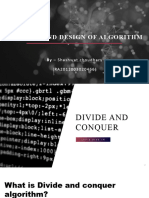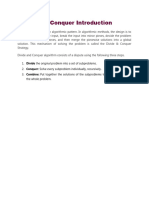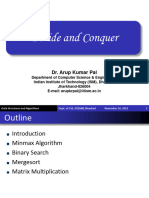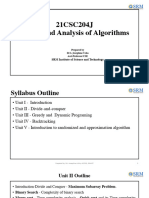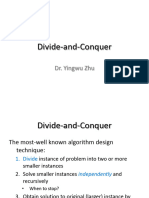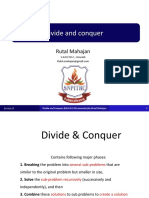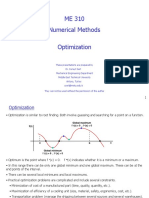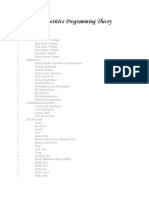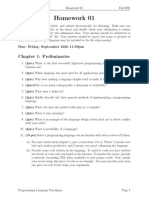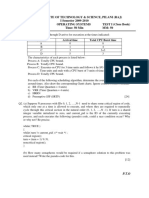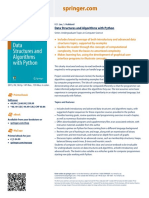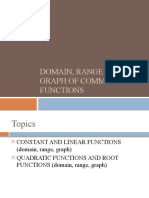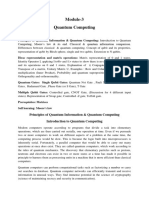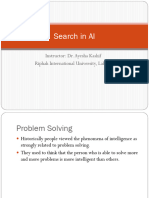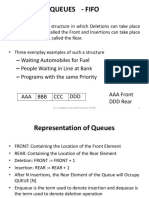0% found this document useful (0 votes)
47 views2 pagesData Structures Divide and Conquer
The divide and conquer approach involves breaking a problem into smaller sub-problems, solving each independently, and then merging the solutions to form the final answer. This process consists of three main steps: Divide, Conquer, and Merge. Examples of algorithms that utilize this approach include Merge Sort, Quick Sort, and Binary Search.
Uploaded by
Abdulwadud MuhammadCopyright
© © All Rights Reserved
We take content rights seriously. If you suspect this is your content, claim it here.
Available Formats
Download as PDF, TXT or read online on Scribd
0% found this document useful (0 votes)
47 views2 pagesData Structures Divide and Conquer
The divide and conquer approach involves breaking a problem into smaller sub-problems, solving each independently, and then merging the solutions to form the final answer. This process consists of three main steps: Divide, Conquer, and Merge. Examples of algorithms that utilize this approach include Merge Sort, Quick Sort, and Binary Search.
Uploaded by
Abdulwadud MuhammadCopyright
© © All Rights Reserved
We take content rights seriously. If you suspect this is your content, claim it here.
Available Formats
Download as PDF, TXT or read online on Scribd
/ 2







